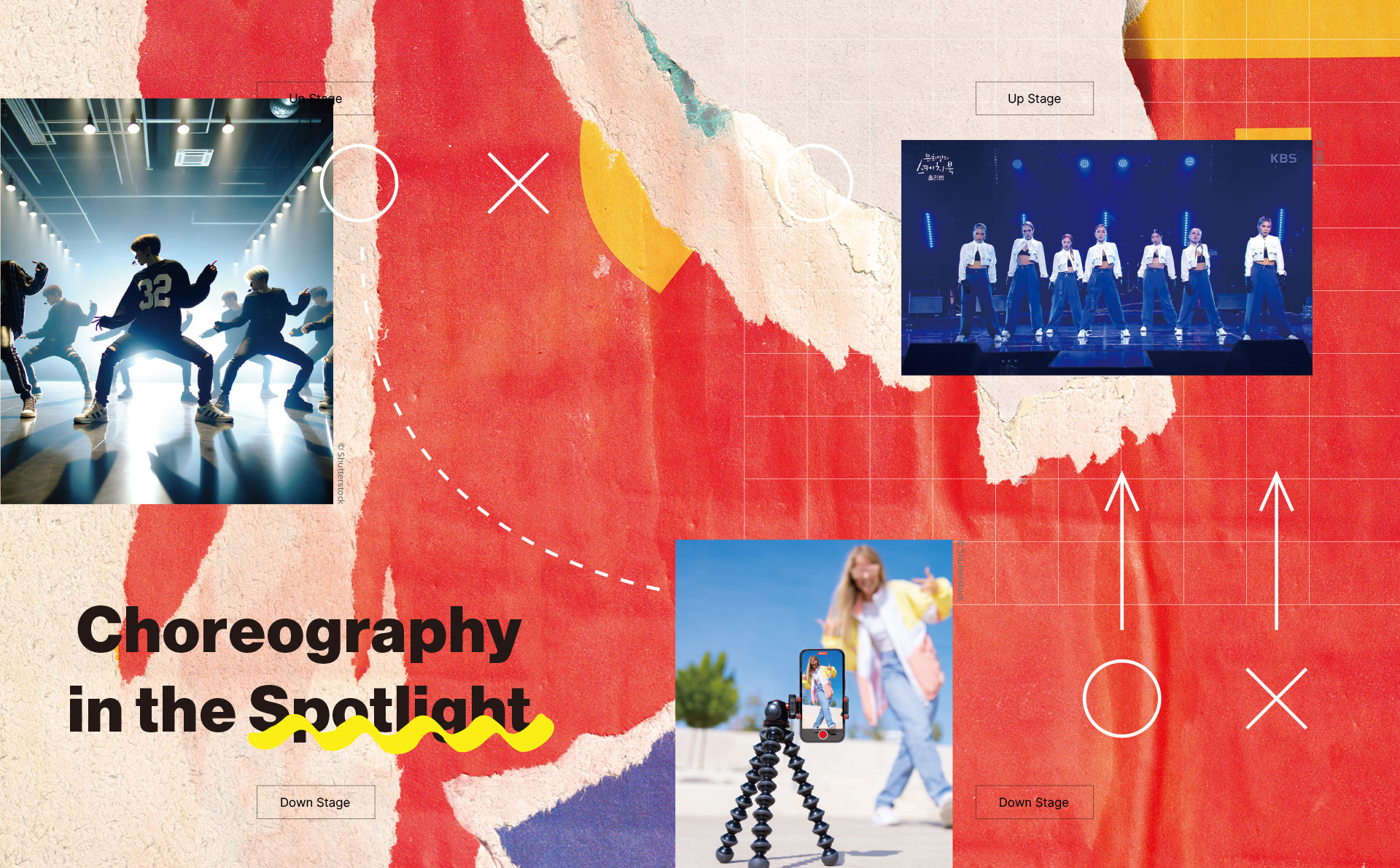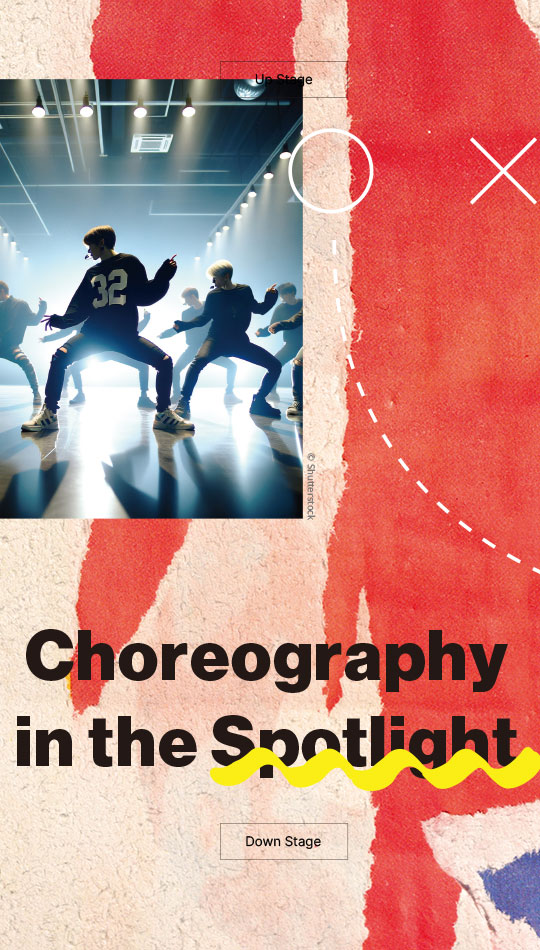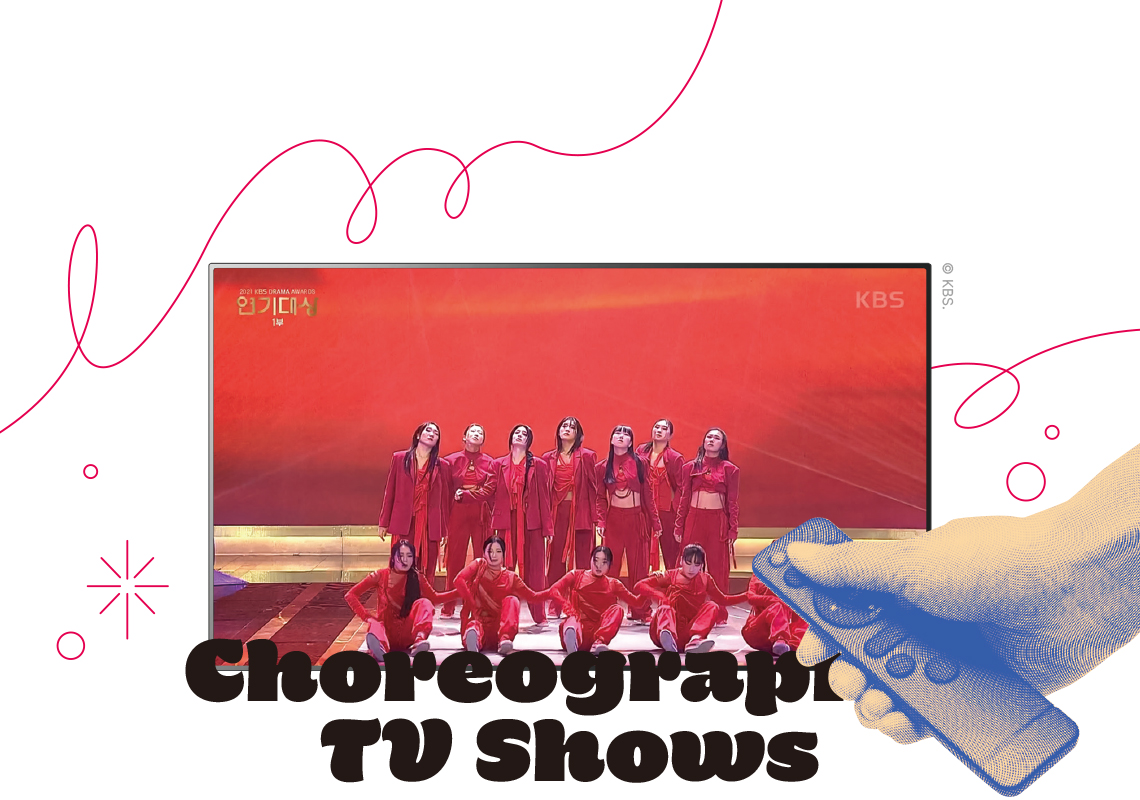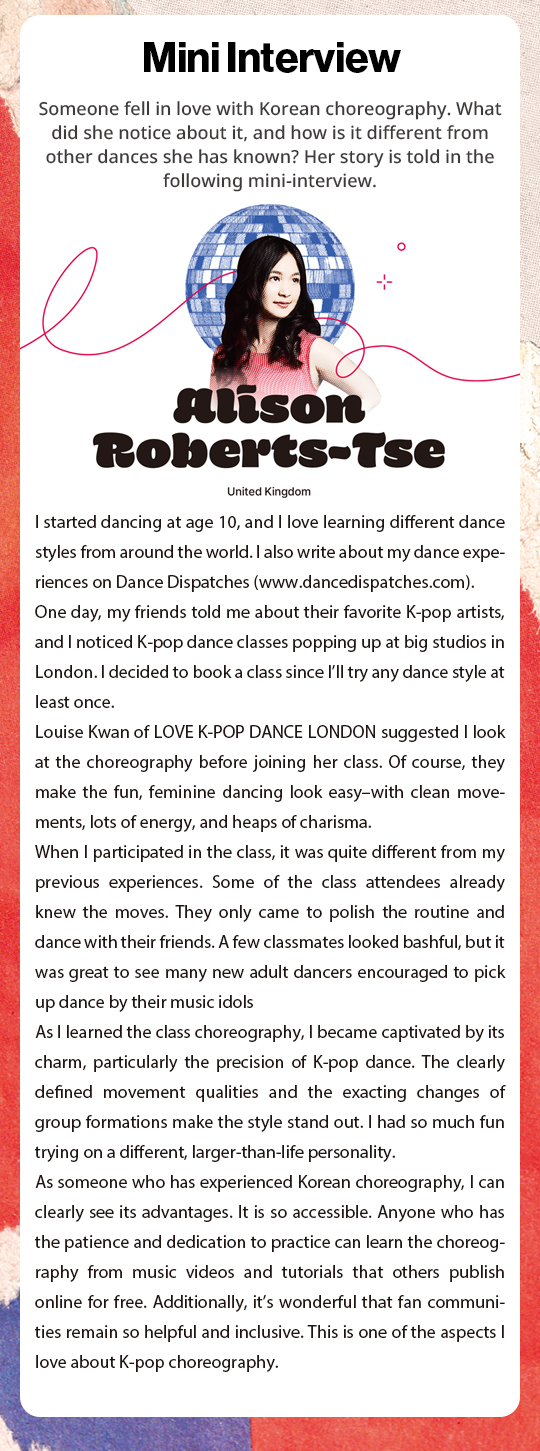In recent years, the word “choreography” has become popular in Korea. What is choreography? The word “choreography” means to put together dance movements in advance. But these days, the word “choreography” is used alone, it typically refers to a blend of various street dance styles, such as breaking, popping and rocking, rather than a single genre. It usually refers to the design of dance movements that combine various street dances or just choreography that can’t be described as traditional street dance. Let’s take a look at how choreography is being embraced in Korea.


Writer. Kim Da Un
Choreography’s Rise with K-pop
In the past, Koreans used the word “choreography” to classify different types of dancers. Dancers who improvised based on traditional street genres were called “freestyle dancers,” while those who choreographed for broadcast and danced to a set routine were called “broadcast dancers” (dancers for film and television shows). Meanwhile, those in the gray area between the two were called “choreographers.” Choreography was a type of dance for broadcast that borrowed heavily from street dance.
K-pop is one of the main reasons why choreography has become so popular in Korea. K-pop entertainment companies have long embraced choreography for its unique style of dance. People around the world have been fascinated by K-pop’s primary features―including kalgunmu (several people performing the same movements at the same time) and other high-quality dances―and have begun to refer to “choreography” when discussing K-pop.
As such, choreography has become one of the key factors in the success of K-pop. As K-pop performances have become increasingly important, entertainment companies have made unprecedented investments in choreography to ensure success. For a single song, they may hire several choreography teams to create the dances, then select the best parts and put them together.
As K-pop has gained more attention, choreography has received more of the spotlight, and as K-pop’s popularity has grown, this has led to the growth of the choreography industry. K-pop and choreography have become inseparable.

TV Shows Featuring Choreography
But K-pop is not the only reason for the rise of choreography. Choreography’s success lies in its appearance on TV shows. Choreography is different from improvised dance. The genre focuses on the creative design of dances rather than improvisation on the spot, so there’s no better medium than video to show what’s great about choreography.
While K-pop stage shows can be a fantastic way to showcase what’s great about choreography, there is no comparison to the shows that focus exclusively on choreography. In Korea, there are several programs that have popularized choreography, most notably “Street Woman Fighter.” The show consists of teams of dancers who compete individually and as a team to determine the ultimate winner.
The program, which featured advanced levels of dancing and emotional interaction between the dancers, helped to change the perception of dancers in Korea, where they were often seen as assistants to K-pop artists. The program also provided a terrific opportunity to introduce people to the genre of “choreography,” as there were many parts of the show where dance teams could showcase their choreography skills.
The public’s interest in dance and choreography has since led to the broadcast of “Street Woman Fighter Season 2,” “Street Dance Girls Fighter,” “Street Man Fighter” and “Be Mbitious.” That interest hasn’t waned, even now that the shows are no longer on the air. The shows led to an unprecedented interest in choreography.

Seeping Into People’s Daily Lives
Thanks to K-pop and TV shows featuring dancers, choreography has become extremely popular in Korea. However, it is interesting to note how this genre has gone beyond popularity and into people’s everyday lives.
Choreography has been popularized through short-form videos which last a minute or less. These are common on TikTok, Instagram and YouTube, and are perfect for consuming enormous amounts of eye-catching content in a short amount of time. This has led to the popularity of short, engaging, choreographed videos.
With such content being produced in massive quantities, young people who are heavy social media users are being exposed to “dance.” As a result, even young people who do not aspire to become famous dancers or idols are increasingly attending dance schools. More and more people are taking month-long choreography classes during their vacations or one-day classes to learn the kind of choreography they are interested in.
Koreans used to think that dancing was difficult and not fun, but now people who want to learn simple choreography for short videos with their friends and those who want to move their bodies as an alternative to boring workouts are turning to “choreography.” This means that the dance genre has broken down barriers and become more accessible to the masses.
How will choreography continue to evolve? Given it has been more adaptive than any other genre, choreography will certainly continue to evolve in different ways. The future of choreography is sure to be exciting as people continue to use the concept to reinvent street dance and even the genre of dance itself.



